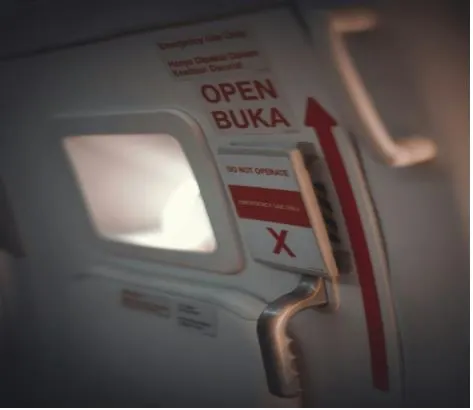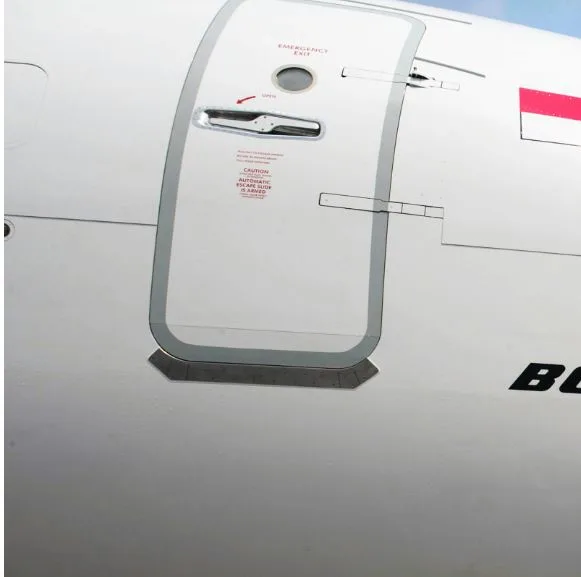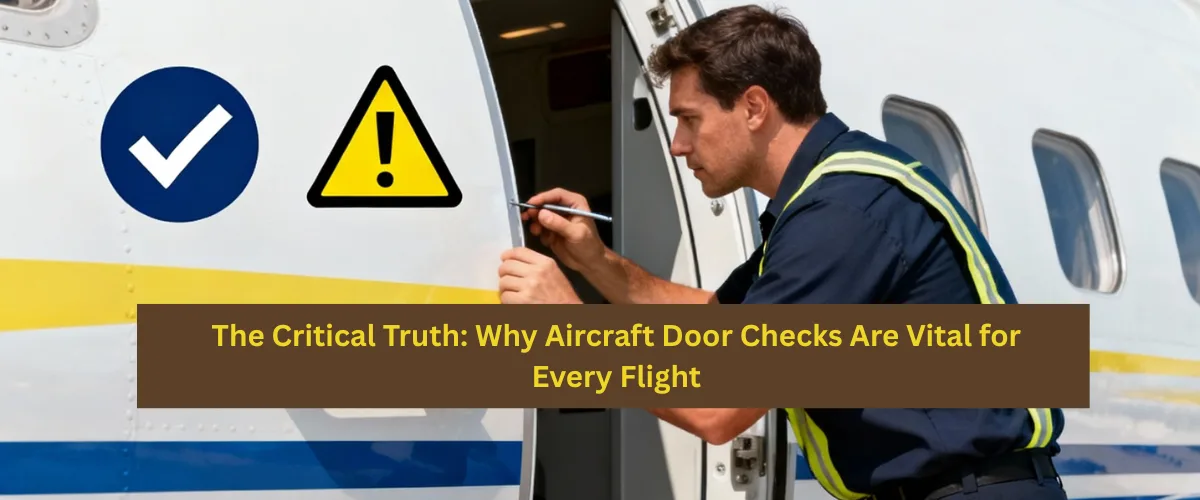Why Do Aircraft Door Checks Matter?
Millions of passengers travel by plane safely and effectively every year – which is possible due to the dedication and precision of the flight crews and ground staff. From preflight to post-flight, all procedures are followed step by step with discipline so that there is no compromise in safety. Aviation is considered to be the safest mode of transportation in our world today, but in the aviation industry even a small minor error can have a very serious consequence.
Table of Contents
There is some notable experience in aviation history – which is a powerful reminder that even one small component matters, like door latches, require careful attention and regular checks.

The Basics of Aircraft Doors
Commercial aircraft have 4 to 8 doors, all of which must be securely closed prior to take-off. There is a specific procedure involving mechanical latches, pressure seals and cockpit indications to confirm proper engagement. If a door is not closed correctly and aircraft reach at cruise altitude (around 35,000 feet), the result will be rapid cabin decompression – a critical failure leading to structure damage, passenger injuries, or even loss of control of the aircraft.

Historic Incidents
On March 3, 1974, Turkish Airlines Flight 981, a McDonnell Douglas DC-10, crashed a few seconds after takeoff. The pilot lost control and the aircraft descended into the Ermenonville Forest near Paris. 346 passengers and crew were killed. At that time, this was the deadliest aircraft accident in history. What was the cause? The cargo drone was not closed properly.
In September 2021, a Delta Air Lines Airbus A321 indicated a cockpit warning that the cargo door was not completely closed. The flight immediately aborted on the taxiway. The maintenance team fixed the issue, the flight was delayed for about 45 minutes. That day a modern sensor-based monitoring system did an amazing job by detecting issues early and preventing a major incident from happening.
Technology vs. Human Checks
Modern aircraft are built with very advanced safety technology, including sensor- based door monitoring systems and cockpit alerts which notify the crew whether the door is closed or not.
There are two main types of aircraft doors:
- Passenger doors are plug-type doors that open inward initially and are impossible to open during flight due to cabin pressure.
- Cargo doors, however, open outward and pose a higher risk. If their latches aren’t properly engaged, they are more prone to failure and are thus monitored with greater scrutiny.
However, human checking remains essential, technology is only part of the solution
Safety in Modern Aviation
Emergency Procedures
When the cockpit sensors detect an improperly latched door, the takeoff can be aborted immediately. And if the issue is detected during flight, the aircraft may need to descend rapidly and divert towards the nearest airport.
Alarms and Warnings
In modern systems now, if any door is not secured, they will issue a visual-audio alert. In some aircraft, pressurization and takeoff will be automatically prevented if the status of the door is unsafe.
The Role of Maintenance Crews
Aircraft maintenance technicians conduct regular checks on door mechanisms, including:
- Inspection and servicing of seals, hinges, and latch systems
- Routine audits and maintenance logs to ensure performance and reliability
- Adherence to Standard Operating Procedures (SOPs), which include verbal confirmation checks like:
“1L and 1R cross-checked.”
These inspections form a critical part of ensuring that all doors are secure before flight.
Regulations and Training Standards
FAA (United States)
- 14 CFR Part 121.309: All doors must be secured before flight.
- AC 120-48: Recommends indicator checks and crew verbal confirmations.
- 14 CFR Part 121.417: Mandates training for flight attendants on door operation and emergency handling.
ICAO (Global Standards)
- Annex 6 (Part I): Aircraft cannot operate unless all doors are verified as secure.
- Doc 10002 – Cabin Safety Training Manual: Includes arming/disarming procedures, cross-checks, and emergency responses.
EASA (Europe)
- CS-25.783: Aircraft must have clear indicators for door security verification.
- Part-CC: Cabin crew must be trained in normal and emergency door procedures.
Final Thoughts
Aviation safety does not depend on engines and aerodynamics; it depends even on small components like door latches. Even a small error can have a big consequence. Fortunately, with rigorous training, systematic procedures, and cutting-edge technology, because of this,door issue incidents are rarely seen.
Every procedure matters in the aviation industry. Door checks – routine and often unnoticed – are a great example of human discipline and technology working together which makes our air travel easy.
Join us on Telegram Group , Instagram for the Latest Aviation Updates.
Also read:Boeing 797: Everything We Know About Boeing’s New Mid-Market Jet – AeroTexts


cp6mgk